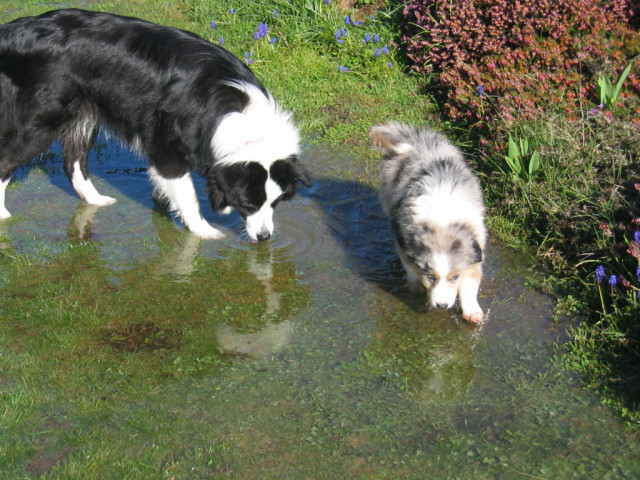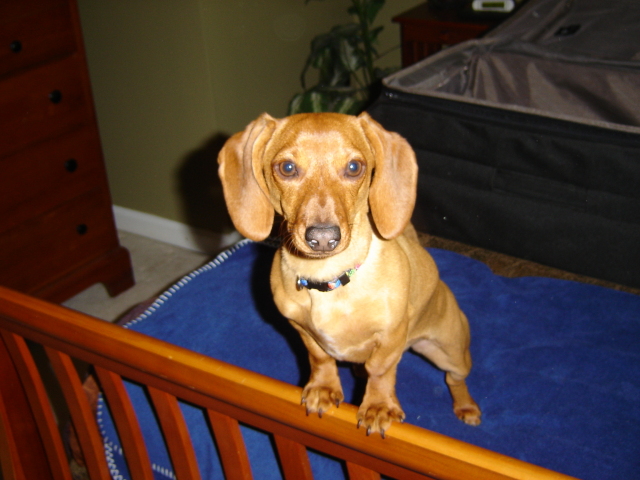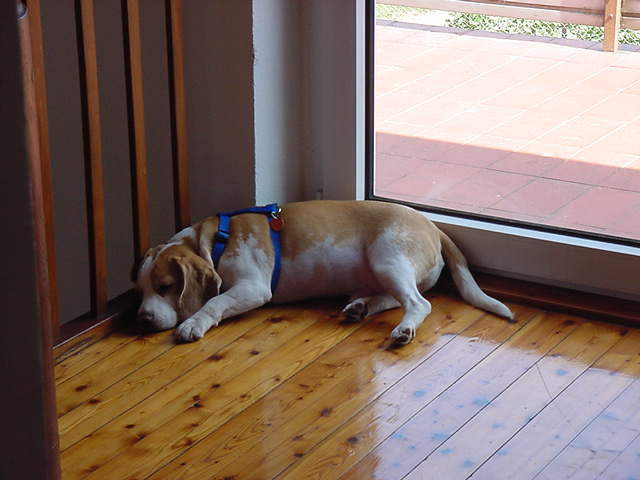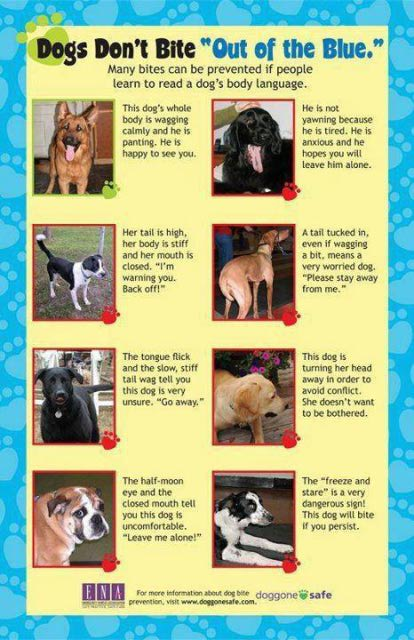QuestionQUESTION: hello Jill! I adopted a pit/lab/pointer mix from the pound about 1.5 years ago. she is apx. 2.5 years old & had spent the majority of her life in ASPCA shelters. she is black short haired and quite beautiful, but very strong, muscular, active and is a total Bitch to handle at times. she constantly tries to dominate me, but mostly will give up when she knows she can't win. She has bitten me several times, but is always remorseful. I know she respects me as the "pack leader" but will fight for control cosistently. She was aweful when I first got her, but has made alot of progress in many ways, but every bit of progress appears to be replaced by some other unsavory behavior. I feel like i cannot trust her and am always afraid that other people will trigger something that will spark aggression. Here's some of the typical behaviors:
she (Raven) accosts people who visit and tries to force them to pet her. She gets her entire very muscular body into motion and whips her long tail across your legs at high speed, which hurts, and she vigorously throws herself between me and visitors for attention.
Raven passively aggressively competes with my for my boyfriend's attention and will constantly jam her head in between us and push us with her head and nose to get attention from him, or perhaps she's trying to keep him away from me. she actually bit me on Sat. night when i attempted to correct the behavior by pushing her away.
Sat. was a bad day for her....and me....to the point where i considered taking her back to the ASPCA. She jumped into my car during the afternoon when I had to get to an appointment, and would not get out. i coaxed, cajoled, tried to get her out with food...she would not budge. i became very pissed off as I was now 15 minutes late for my appointment. with each new effort to get her out of my car, she began snarling and growling at me and bearing her teeth. I took large pebbles from the driveway and pelted her, still nothing but more anger on her part. I threatened her with a rake, she vigorously fought the rake. After 20 minutes or so, she decided to come out when tempted with food.
On the flip side, she loves being a member of the family and being with me. We go hiking and she comes alive with joy, smiling all the way and exploring everything. She also has a tender side and when I've been injured, she has mothered me.
I will also mention that she has scars on her head and ears from being bitten by other dogs before I got her. For all i know, she was used as a fight dog or bait for fight dogs. I thought i could heal her emotional wounds with consistency, love and patience, and yes, many of her bad behaviors have diminished or disappeared and she is making progress, but I don't trust that she won't go after me when she's annoyed or anxious. I am not in the financial position to invest in expensive training sessions. Can you provide some insight and tips to help me?
Thanks! Michelle
ANSWER: You have an actively aggressive dog and, from your own report, my opinion is that some of this is fear based and the rest is most likely the result of mismanagement. "Pelted her with pebbles"? Threatened her with a rake which she vigorously fought off???? Read your question: you need to take a step back, this dog is defending herself and also trying to control you because, in her culture, you are confusing, sometimes frightening, and may be eliciting conditioned responses from her horrible past.
OK back to square one: the dog was most likely used as a bait dog and most likely horribly neglected by sub-humans at some point; she was never socialized or properly habituated to households until you came along. You most likely bit off more than you can chew but you've made progress: the dog is now attempting to take charge because that's what dogs of this type will DO when there's no clear, consistent leadership. Her reaction to your boyfriend might be a response to the fact that he's male/adult/human and she may be attempting to control his behavior toward you, and yours toward him, because she misunderstands what she sees: physical contact can alarm a dog that comes from a neglectful or abusive background. A Pit Bull up in the Bronx attacked the three year old child in the apartment when the parents were engaged in a strong and loud argument (which may have had physical aspects) -- the dog was redirecting its anxiety toward the lower ranking member of his "pack"; your dog may be doing much the same thing, all out of anxiety. STOP what you're doing, go back to the beginning.
FIRST: learn how to read "dog" so you can interpret body language appropriately, thereby anticipating the dog's mood, reactive state, etc.:
http://www.canis.no/rugaas/index.php
Turid Rugaas, whose site that is, also has a book and accompanying video: "On Talking Terms with Dogs: Calming Signals" which are most likely available from her site or from Dogwise.com. Buy them.
SECOND: Throw out all your training tools and start over. Learn about appropriate dog training techniques in this video presentation of why positive reinforcement training works, given by Dr. Ian Dunbar:
http://www.youtube.com/watch?v=wTkYvn1HjrI&NR=1&feature=fvwp
THIRD: Plan your new course of positive reinforcement training very carefully over the next two weeks while your dog is on a behavior modification program which I will give you in the FOURTH paragraph. Go to Dr. Dunbar's site, DogStarDaily.com and read articles pertaining to training difficult adult dogs, watch videos offered there, compile a game plan and WRITE IT DOWN as if you were presenting it to someone else. Buy a strong martingale collar and a head collar (throw out the choker collar if you use one) here:
http://www.things4yourdog.com/product/407060
FOURTH: Starting asap, put your dog on Nothing In Life Is Free (NILIF); start by re-teaching "sit" in the following manner (read both articles posted below VERY carefully so you fully understand the NILIF program):
http://home.gci.net/~divs/behavior/bemod_relax.html
Follow the detailed instructions on how to re-teach "sit" to the letter. Understand the NILIF better at this site:
http://www.vin.com/VINDBPub/SearchPB/Proceedings/PR05000/PR00470.html
I can't see anything from here but this dog's behavior (pushiness) toward visitors is also most likely driven by very high anxiety. She needs to be isolated from visitors for a few days while you put NILIF into place. THE DOG MUST EARN EVERYTHING BUT...before you begin....I want you to totally ignore her until she gives up trying to get your attention. This means: refer to her as "rover", no eye contact, no touching, if she comes to you, turn away; if she leans on you, move; if she's in the room with you and attempts to force herself on you, get up and put a closed door between you for twenty seconds. The entire point here is to make this dog give UP trying to force your attention to turn toward her, and this can take up to two days. The dog will appear visibly depressed, that's OK. Once it's clear she's given up trying, teach her the "sit" and put her on NILIF immediately. Put a house tab on her: leash with handle cut off. Start slowly: first institute NILIF, then a couple of days later use the house tab to control her when you pass through doorways, then add no furniture (ever) to her regimen, then watch positions of authority (tops of stairs, lying in doorways, blocking your feet when you're seated) and move her, then make her "sit" and "wait" when any visitors enter (start as a setup: ask two or three people over the course of a day to arrive at predetermined times: doorbell rings, dog barks, etc., dog is told to sit/wait, open door, if dog moves close door, start over, keep going until dog sits/waits while visitor(s) walk in.) Add these things slowly over the course of the first two to three weeks while the dog is on NILIF. IF, AT ANY TIME, THE DOG BECOMES AGGRESSIVE for any reason not apparent to you: STOP and re-post. What will most likely happen (remember, I can't evaluate this dog personally) is that she will make strong effort to force your attention at the beginning when you ignore her, then give up. That's what usually happens, even in the most aggressive dogs, BUT no guaranty since I can do nothing but read your text.
FIFTH: At the six week mark, start your positive reinforcement training. Introduce one behavior at a time until she clearly understands and is VOLUNTARILY working for you, then take the easiest outdoors and START OVER (since the stimuli outdoors are so overpowering, the dog's cognition will slip at first and you must patiently re-teach, but this can move forward quite quickly.) You want the dog to VOLUNTARILY work no matter where you are.
This entire plan will restructure your relationship with this dog; it will psychologically promote you and will restore her trust in you; it will help her to be more relaxed and alleviate the anxiety she is demonstrating. HOWEVER: once a dog has bitten, the possibility of the dog biting again is high. You must identify the situation(s) that provoke aggression and avoid them ABSOLUTELY until the dog has begun to obviously defer to you in most (if not all) situations, and this may take a few months. Do NOT allow anyone else to give her "commands", to interact with her in a training manner or interfere with what you are doing. The dog also needs bite inhibition work which should be done when her training appears successful and for that you will need to re-post with reminder. I also want FOLLOWUP to this question, I want to know how the dog is reacting to what you're doing in order to protect YOU and HER.
Also: read the following:
Brenda Aloff: "Aggression in Dogs: Practical Management, Prevention and Behavior Modification" and:
http://www.k9aggression.com/Aggression/safety.html
If possible, obtain the following video:
http://www.dogwise.com/ItemDetails.cfm?ID=DTB1067
There are physical causes for developing aggression. Although your report insinuates this may be strictly behavioral, the dog should have full medical evaluation by a veterinarian. If her triggers are very severe, a short course of medication (NOT SSRIs), like propanolol, will help truncate the adrenaline in the fight/flight response. Report back, please. This isn't child's play and I don't ordinarily work with active aggression in this venue, I want to know what's going on.
PS to your question during feedback: it's not a good idea to ask questions from feedback as many people don't read this, so next time use followup or re-post and remind me of the situation. AND YES, I do want followup, I want to stay on top of this situation very closely! Good luck.
---------- FOLLOW-UP ----------
QUESTION: Jill, I wanted to thank you for your feedback and the links. Just that ONE tip on ignoring her when she is pushy about getting immediate attention from visitors and me has helped tremendously, she has begun to calm down quickly when people come into the house...I've also incorporated the method of putting my hand on her hind quarters when she throws her entire body into "greeting" people...it helps to quiet her very well!! She is progressing very well on the behavior modification program. Still not sure how to handle the car issue, i've just been making sure she does not have access when the car door is open. She sometimes goes to the door of the car and whines to get in...not sure what that's about. Any tips on getting her out of the car without conflict when she does get in? Thank you!!! Michelle
AnswerFAR too soon to attempt to modify her car guarding behavior (she's in, you want her out) and why are you putting your HAND ON HER when she attempts to greet people, that was NOT in my protocol for behavior modification. You have an actively aggressive dog, touch is a PRIMARY reinforcer. At this point I think you need in person evaluation by a certified applied animal behaviorist: you get what you "pay" for:
http://certifiedanimalbehaviorist.com/page6.html
http://www.animalbehavior.org/ABSAppliedBehavior/caab-directory
I RARELY offer behavior modification for active dog to human aggression in this venue; your statement "Just that ONE tip on ignoring her when she is pushy about getting immediate attention from visitors and me has helped tremendously.." tells me you may have not done the rest of the work, and there was a lot of it in my answer. You need a professional consultation, in person, with a specialist. You can find one in the above links.

 Dog in Heat?
QuestionLily and Jorge
QUESTION: Hello,
We have
Dog in Heat?
QuestionLily and Jorge
QUESTION: Hello,
We have
 Mini Daschund with anxiety issues
QuestionAbigayle
QUESTION: I have a 3 1/2 yr old
Mini Daschund with anxiety issues
QuestionAbigayle
QUESTION: I have a 3 1/2 yr old
 licking the floor not stop
QuestionGeorgie
QUESTION: Hi,
I have a 7 year ol
licking the floor not stop
QuestionGeorgie
QUESTION: Hi,
I have a 7 year ol
 Agressive 1 yr old mini goldendoodle
Question
our millie
My husband and I got our min
Agressive 1 yr old mini goldendoodle
Question
our millie
My husband and I got our min
 Is this aggression, dominance, or play?
QuestionQUESTION: I have a question regarding doggy beh
Is this aggression, dominance, or play?
QuestionQUESTION: I have a question regarding doggy beh